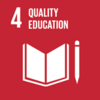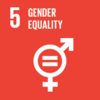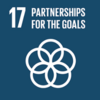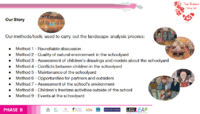Diedrich Sandbox: Difference between revisions
No edit summary |
|||
| Line 1: | Line 1: | ||
== The LADDER Living Lab == | |||
<gallery caption=" " widths="300px" heights="200px" perrow="3"> | |||
File:LL Budapest-1.png | |||
File:LL Budapest Location.png | |||
File:LL Budapest-3.jpg | |||
</gallery> | |||
This is a laboratory with students for supporting a democratic environment. | This is a laboratory with students for supporting a democratic environment. | ||
Our partners include: | Our partners include: | ||
| Line 10: | Line 14: | ||
== Who is Involved? == | == Who is Involved? == | ||
* Staff, students (Bsc, Msc, MA, PhD) and volunteers from the university | * Staff, students (Bsc, Msc, MA, PhD) and volunteers from the university | ||
* Staff and volunteers of the NGO kultúrAktív | * Staff and volunteers of the NGO kultúrAktív | ||
| Line 19: | Line 22: | ||
== Main Theme of the Living Lab == | == Main Theme of the Living Lab == | ||
The Hungarian project team has formed a living lab called LADDER, which is a mosaic word in Hungary for Laboratory with Students for Democratic Environment. The LADDER project aims to popularize democratic schoolyard design and connect academia with school communities through a children and youth-centered community design process in which built environment educators, the school community (teachers, students, parents, etc.) and the landscape architecture profession (university teachers and students) work together to map, assess, envision and co-design the school environment. | The Hungarian project team has formed a living lab called LADDER, which is a mosaic word in Hungary for Laboratory with Students for Democratic Environment. The LADDER project aims to popularize democratic schoolyard design and connect academia with school communities through a children and youth-centered community design process in which built environment educators, the school community (teachers, students, parents, etc.) and the landscape architecture profession (university teachers and students) work together to map, assess, envision and co-design the school environment. | ||
<gallery caption=" " widths="100px" heights="100px" perrow="4"> | |||
File:UN_SD_4.png | |||
File:UN_SD_5.png | |||
File:UN_SD_11.png | |||
File:UN_SD_17.png | |||
</gallery> | |||
== Methods == | == Methods == | ||
Revision as of 19:47, 28 March 2021
The LADDER Living Lab
This is a laboratory with students for supporting a democratic environment. Our partners include:
- The Hungarian University of Agriculture and Life Sciences, Institute of Landscape Architecture, Urban Planning and Garden Art
- kultúrAktív Association
- Budaörs No.1 Primary School
Who is Involved?
- Staff, students (Bsc, Msc, MA, PhD) and volunteers from the university
- Staff and volunteers of the NGO kultúrAktív
- Students, teachers & staff and parents from the school
- Local architects, landscape architects, teachers, pedagogs, educators, etc.
The Living Lab engages different school communities (students, teachers and parents) from Hungary. Primary and secondary schools are involved as well, with different social backgrounds.
Main Theme of the Living Lab
The Hungarian project team has formed a living lab called LADDER, which is a mosaic word in Hungary for Laboratory with Students for Democratic Environment. The LADDER project aims to popularize democratic schoolyard design and connect academia with school communities through a children and youth-centered community design process in which built environment educators, the school community (teachers, students, parents, etc.) and the landscape architecture profession (university teachers and students) work together to map, assess, envision and co-design the school environment.
Methods
The LADDER Living Lab is an exploratory collaboration space that allows continuous reflection and improvements of participatory methods through a combination of research and innovation processes within a mid-term partnership between the University, the NGO kultúrAktív and various local school partners. The lab is a user-centered, open-innovation ecosystem, operating in a territorial context of Hungary and with a thematic focus on democratic school environment redevelopment. Living labs operate with an iterative Participatory Action Research methodology that systematically provides solutions for locally identified issues through a cycle of: co-creation, exploration, experimentation, prototyping, and evaluation. Due to COVID-19, most of the collaboration activities are done remotely. The participatory design process in the LADDER Living Lab is not limited to co-design but it also focuses on collaborative mapping, assessment, goal setting, testing and collective evaluation of the school yard. As in each phase we have special needs and aspects that should be underlined, identification of the characteristics and the benefits of each methodology and analysing in which phase of the participatory process it fits the best is a primary question. After introducing the online tools and methods; virtual round table sessions, questionnaires, online mapping, etc., the authors critically reflect on how the remote solutions implemented in the democratic planning process influenced the quality of civic engagement and the participation of the various actors.
Location
A short paragraph describing the location of the Living Lab
















